#Granja de San Ildefonso
Text

Aguadoras ante la diligencia que hacía el recorrido entre la Granja de San Ildefonso y Segovia. España, 1885
Foto: José Regueira
29 notes
·
View notes
Text






Real Sitio de San Ildefonso
0 notes
Text

Número de catálogo: P000127
Autor: Crayer, Gaspar de
Título: La Caridad romana
Fecha: 1620 - 1630
Técnica: Óleo
Soporte: Lienzo
Dimensión: Alto: 198 cm; Ancho: 144 cm
Procedencia: Colección Real (colección Isabel de Farnesio, Palacio de La Granja de San Ildefonso, Segovia, pieza donde se decía misa antiguamente, 1746, nº 745; La Granja, pieza tercera de azulejos, 1766, nº 745; Palacio de Aranjuez, Madrid, pieza de cenar, 1794, nº 745; Aranjuez, sala de corte del rey, 1818, nº 745)
Información e imagen de la web del Museo del Prado.
9 notes
·
View notes
Text
For the Princess of Asturias 18th birthday bells will ring in all Royal Sites and Palaces and churches in Asturias on October 31st, 2023.
Pictured are the Royal Site of the Monastery of Santa María la Real de las Huelgas in Burgos, Oviedo's Cathedral (Asturias), Covadonga Basilica (Asturias) and the Royal Site of La Granja de San Ildefonso in Segovia.
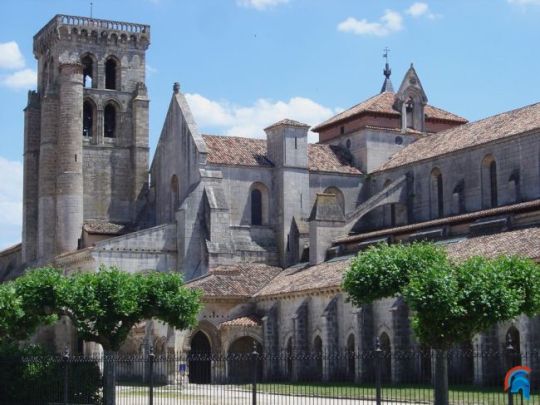



21 notes
·
View notes
Text
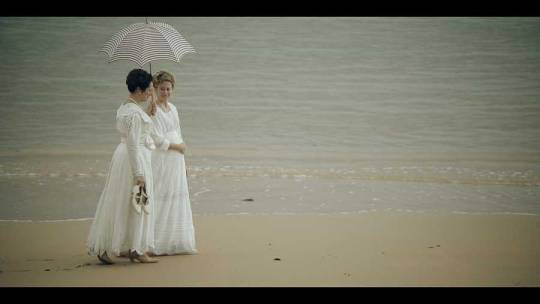
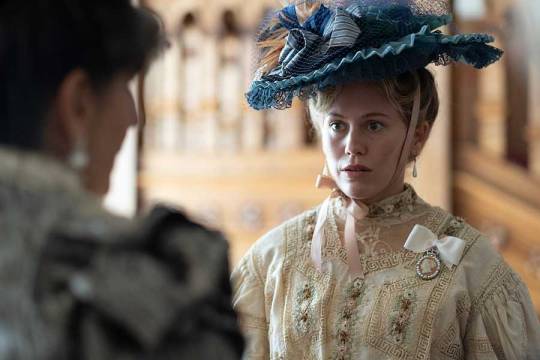


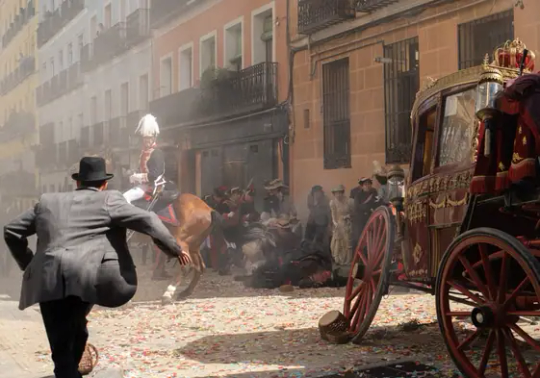



Upcoming series: Ena
In September, the filming of Ena began, a biographical series that will focus on the life of Victoria Eugenie of Battenberg, queen of Spain through her marriage to Alfonso XIII between May 31, 1906 and April 14, 1931, after being the monarchy deposed later by the proclamation of the Second Republic. Great-grandmother of the current king Philip VI of Spain, of whom she was godmother at his baptism. Throughout six chapters, the series will tell the life of Victoria Eugenie and at the same time offer a portrait of a time that changed the world, the first half of the 20th century, from 1905 to 1945. Born on October 24, 1887 in Aberdeenshire, Scotland, Ena was the daughter of Henry of Battenberg and Princess Beatrice, youngest daughter of Queen Victoria of the United Kingdom and Prince Albert of Saxe-Coburg and Gotha. Her godmother was Eugenia de Montijo, empress consort of France as Napoleón III's wife. The name of the series comes from what her friends and family called her since she was little, Ena.
The fiction is based on the novel of the same name by Pilar Eyre. Javier Olivares, who was behind the acclaimed Isabel and El Ministerio del Tiempo, will be the showrunner and plot manager for Ena. In addition to Olivares, the script is written by Isa Sánchez, Daniel Corpas and Pablo Lara Toledo. The series will be directed entirely by women: Anaïs Pareto, director of the series as a whole, in addition to four episodes, and Estel Díaz, who will direct two episodes.
“Ena is the portrait of historical moments that seem distant but are not so far away, because without them we would not understand the times we live in now,” Olivares declares in the press release sent by TVE. The writer and screenwriter remembers that Victoria Eugenie “fought to be happy in a bitter time, in which she witnessed two world wars, a civil war and a great pandemic, the tortuously called Spanish flu.”
For Pilar Eyre, author of the novel, she was "an extraordinary woman: cultured, supportive, liberal-minded, modern and very loyal." And she is excited because "finally all Spaniards can know" the story of a "misunderstood" woman. in their time, which they will always consider foreign." It is a fiction co-produced by RTVE with Ena La Serie AIE, La Cometa TV and Zona App. José Pastor, director of Film and Fiction at RTVE, has pointed out that "it is a "RTVE is proud to be able to portray this interesting historical character, from the point of view of two women directors and with Javier Olivares as showrunner, in one of its best series."
The Spanish actress of Anglo-Danish descent Kimberly Tell will play Ena and Joan Amargós will play Alfonso XIII. For her part, Elvira Mínguez will play Maria Christina von Habsburg-Lothringen, mother of Alfonso XIII. The cast is completed by Lucía Guerrero (Beatrice of Saxe-Coburg and Gotha), Raúl Mérida (Alfonso of Orleans and Bourbon), Juan Gea (Álvaro Figueroa y Torres, Count of Romanones), María Morales (María del Carmen Angoloti y Mesa, Duchess of Victoria), Pedro Mari Sánchez (Rodrigo de Saavedra y Vinent, Marquis of Villalobar), Luisa Gavasa (Eugenia de Montijo) and Joaquín Notario (José de Saavedra y Salamanca, Marquis of Viana)
Mariano Peña will play Miguel Primo de Rivera; Jaume Madaula will play the anarchist Mateo Morral, author of the attack committed at the royal wedding; Tomás del Estal will be Emilio María de Torres y González-Arnáu, and Ángel Ruiz will once again give life to Federico García Lorca, a character he already played in El Ministerio del Tiempo, among others.
The series will be filmed entirely in natural exteriors and interiors, like the Royal Palace of Madrid, the Palace of La Granja de San Ildefonso (Segovia), the Palace of Santoña (Madrid), the Palace of Fernán Núñez (Madrid), the Fort of San Francisco (Guadalajara) and the Magdalena Palace (Santander), built in 1911 by the City Council as a tribute to the monarchs and where Ena spent a good part of her summers in Spain, accompanied by the Royal Family. Filming for the series will continue until the end of December.
~~~~~~~~~~~~~~~~~~~~~~~~~~~~~~~~~~~~~~~~~~
So, the Magdalena Palace is going to be an important location during the series as a summer palace, the main filming location in Gran Hotel, and in that series Ena appeared in the episode 3×13, played by Aída Filx.
Apart from that, are we getting an Olivaresverse (XD)? Most likely not, and it's just references about his previous works as a showrunner, but there are connections between Isabel, Emdt and Ena: Michelle Jenner starring Isabel as Isabella I of Castile, then appearing in a couple of scenes in Emdt episode 1×04 and being an important figure in the lore as the foundress of the ministry (& Eusebio Poncela playing as Cisneros in both series, and also he played Cisneros in the film La Corona Partida and the Carlos Rey Emperador series); Alfonso XIII is a descendant of Isabella I of Castile; Ángel Ruiz appeard as Lorca in Emdt in 4 episodes and now he is on Ena playing as Lorca again, we don't know yet how much screentime he will get or which will his role be (secondary character most likely), but it's great to see more about him!
#Ena#period dramas#upcoming series#ena tve#victoria eugenie of battenberg#maria christina von hasburg#alfonso xiii of spain#kimberley tell#joan amargós#rtve series#pilar eyre#javier olivares#anaïs pareto#estel diaz#federico garcía lorca#ángel ruiz#elvira míngez#maria christina von hasburg-lothringen#lucía guerrero#beatrice of saxe-coburg and gotha#raúl mérida#alfonso of orleans and bourbon#juan gea#álvaro figueroa y torres#maría morales#maría del carmen angoloti y mesa#pedro mari sánchez#rodrigo de saavedra y vinent#luisa gavasa#eugenia de montijo
20 notes
·
View notes
Text
Pasaje de la vida de San Francisco de Asís atribuido a Ludovico Carracci. San Francisco aparece ataviado con un burdo hábito de color pardo, arrodillado ante dos ángeles, uno de los cuales porta una copa que muestra al santo y el otro se inclina en actitud de ofrecerle una casulla que el santo parece rechazar haciendo referencia a su humildad (Fotografía cedida por el Museo Provincial de Lugo, institución depositaria de la obra).

Óleo Lienzo
ángeles San Francisco de Asís 1585
Atribuido a Carracci,
San Francisco y dos ángeles
Finales del siglo XVI oleo Alto: 24 cm; Ancho: 19 cm
Procedencia Colección Real colección Carlo Maratti, Roma, 1712; adquirido por Felipe V, 1723, nº 161; col. Felipe V, Palacio de La Granja de San Ildefonso, Segovia, 1727; col. Felipe V, La Granja, 1746, nº 250; La Granja, 1774, nº 285; Palacio de Aranjuez, Madrid, despacho y dormitorio del rey, 1818

3 notes
·
View notes
Text
Oreja y Herida para César Pacheco en su Debut en España
#Toros Oreja y Herida para César Pacheco en su Debut en España
** Primera novillada del Certamen Judión de Oro.
Segovia, España / Agosto 24 de 2024.- El novillero mexicano César Pacheco se presentó este sábado en España, durante la primera de las dos novilladas de que consta el Certamen Judión de Oro, que se desarrolla en la Granja de San Ildefonso, Segovia, donde obtuvo un balance de saludos en el tercio y oreja.
El triunfo del zacatecano Pacheco aconteció…
0 notes
Text
Las Noches Mágicas de La Granja en familia
Un año más el Ayuntamiento del Real Sitio de San Ildefonso apuesta por la convivencia y el disfrute en familia con la organización del IV FESTIVAL EN FAMILIA los días 16 y 17 de julio.
Un año más el Festival Noches Mágicas de La Granja acogerá el ya consolidado Festival en Familia. Un evento que ha nacido de la necesidad de promover actividades que propicien la convivencia y la conciliación…
0 notes
Text
Best Hotels in San Ildefonso, Segovia, Castile–León, Spain
San Ildefonso, a captivating town nestled amidst the mountains near Segovia in Spain’s Castile and León region, enchants visitors with its royal palace, scenic beauty, and charming atmosphere. Explore the iconic Palacio Real de La Granja de San Ildefonso (Royal Palace of La Granja), delve into the fascinating Museo del Vidrio (Glass Museum), or wander through the picturesque gardens adorned with…
View On WordPress
0 notes
Text
La Reggia di Caserta: un gioiello del Barocco italiano
La Reggia di Caserta, situata nell'omonima città campana, è un imponente complesso monumentale che rappresenta uno dei capolavori indiscussi dell'architettura barocca in Italia. Voluta da Carlo di Borbone, re di Napoli e Sicilia, come residenza reale alternativa alla caotica Napoli, la sua costruzione ebbe inizio nel 1752 sotto la direzione del celebre architetto Luigi Vanvitelli.
Reggia di Caserta: l'immenso patrimonio storico
Il Palazzo, che si estende su una superficie di circa 47.000 metri quadrati, è caratterizzato da una pianta rettangolare articolata su quattro cortili interni. La sua facciata monumentale, lunga oltre 200 metri, colpisce per la sua armonia e il sapiente uso di elementi decorativi, come lesene, paraste e timpani. All'interno, la Reggia vanta oltre 1.200 stanze, riccamente decorate con affreschi, stucchi e sculture di pregio, opera di artisti rinomati come Francesco De Mura, Pietro Bianchi e Gaetano Callani.
Tra gli ambienti più suggestivi, si annoverano l'Appartamento Reale, con la sua Sala del Trono, la Cappella Palatina e la Biblioteca, e l'Appartamento Nuovo, dove spicca la Sala del Presepe con la sua straordinaria opera in miniatura. Degno di nota è anche il Teatro di Corte, considerato uno dei più belli d'Europa per la sua perfetta acustica e gli sfarzosi decori.
Il parco
Ma la vera perla della Reggia di Caserta è il suo immenso parco, che si estende per oltre 120 ettari. Ispirato alle grandi residenze reali europee, come Versailles e la Granja de San Ildefonso, il parco vanta una complessa articolazione di fontane, giochi d'acqua, statue, aiuole e boschetti, creando un'atmosfera di suggestiva bellezza. Tra i punti di maggior interesse, figurano la Cascata Grande, il Giardino Inglese, il Bosco Vecchio e la Peschiera.
La Reggia di Caserta, con il suo Palazzo, il parco e le numerose collezioni d'arte, è stata dichiarata Patrimonio dell'Umanità dall'UNESCO nel 1997. Oggi, questo complesso monumentale rappresenta una delle mete turistiche più ambite in Campania, attirando visitatori da tutto il mondo.
Foto di alex1965 da Pixabay
Read the full article
0 notes
Text
So I am going to see Nick Carter live when he comes to Madrid thanks to my sister, and I'm spending Saturday visiting a palace and attending a water show after having eaten a great lunch at this really cool place called Granja de San Ildefonso.
#loving my birthday this year#i loved it last year too#and the year before that#lire turns 41#yeah you read that right
5 notes
·
View notes
Text

Número de catálogo: P001884
Autores: Brueghel el Joven, Jan; Vrancx, Sebastian
Título: Sorpresa de un convoy
Fecha: 1620 - 1625
Técnica: Óleo
Soporte: Tabla
Dimensión: Alto: 48 cm; Ancho: 86 cm
Procedencia: Colección Real (colección Isabel Farnesio, Palacio de La Granja de San Ildefonso, Segovia, pieza donde está la cama de repuesto, 1746, nº 352; La Granja, pieza de la tribuna, 1766, nº 352; Palacio de Aranjuez, Madrid, pieza en que el rey duerme la siesta, 1794, nº 352; Aranjuez, sala de corte del rey, 1818, nº 352; Real Museo, Madrid, salón 2º escuela flamenca, 1834, nº 328).
Información e imagen de la web del Museo del Prado.
0 notes
Text
youtube
Residencia oficial del principe antonio palacio real granja de san ildefonso..unido con el palacio real de rio frio y alcazar de segovia valsain colindantes cotos de caza pesca intensiva trucha fario y salvelinus fontinalis ciervo muflon jabali... perdiz liebre conejo faisan
0 notes
Text

“Enfante Jaime of Spain, Duke of Segovia (Spanish: Don Jaime Leopoldo Isabelino Enrique Alejandro Alberto Alfonso Víctor Acacio Pedro Pablo María de Borbón-Segovia y Battenberg; French: Jacques Léopold Isabellin Henri Alexandre Albért Alphonse Victor Acace Pierre Paul Marie de Bourbon; 23 June 1908 – 20 March 1975), was the second son of Alfonso XIII, King of Spain and his wife Princess Victoria Eugenie of Battenberg. He was born in the Royal Palace of La Granja de San Ildefonso in Province of Segovia, and was consequently granted the non-substantive title of "Duke of Segovia", courtesy he held along with "Duke of Anjou" as the holder of the Legitimist claim to the French throne. Jaime was a great-grandchild of Queen Victoria of the United Kingdom”
From X
1 note
·
View note
Text
Los rincones secretos del palacio ‘serrano’ del Real Sitio de La Granja de San Ildefonso
Los rincones secretos del palacio ‘serrano’ del Real Sitio de La Granja de San Ildefonso
View On WordPress
0 notes
Text
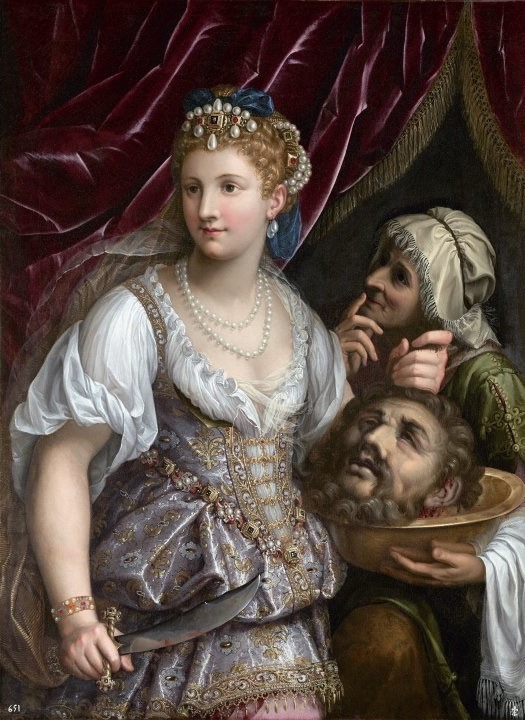
Fede Galizia, Judith* with the Head of Holofernes (1596). © Palacio Real de La Granja de San Ildefonso, Segovia, Patrimonio Nacional, Madrid | Photo: Mick Vincenz
The figure of Judith is believed to be a self-portrait., 1601-10
Fede Galizia, better known as Galizia, (c. 1578 – c. 1630) was an Italian painter of still-lifes, portraits, and religious pictures. She is especially noted as a painter of still-lifes of fruit, a genre in which she was one of the earliest practitioners in European art. She is perhaps not as well known as other female artists, such as Angelica Kauffman and Élisabeth Vigée Le Brun, because she did not have access to court-oriented or aristocratic social circles, nor had she sought the particular patronage of political rulers and noblemen. Via Wikipedia
#FedeGalizia #Galizia #artherstory #artbywomen #womensart #palianshow #art #womenartists #femaleartist #artist
1 note
·
View note